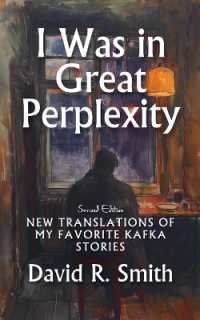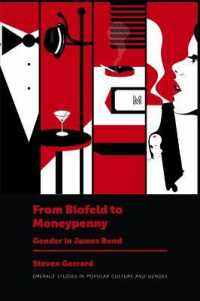Full Description
In the Middle Ages, relic cults provoked rich expressions of devotion not only in hagiographic literature and visual art but also in liturgical music and ritual. Despite the long-recognized inter-play between these diverse media, historians of the period rarely integrate analysis of sacred music into their research on other modes of worship espoused by relic cults. Holy Treasure and Sacred Song situates this oft-neglected yet critical domain of religious life at the center of an examination of relic cults in medieval Tuscany. Long recognized as a center of artistic innovation during the Renaissance, this region also boasted the rich and well documented veneration of holy bishops and martyrs buried in the cathedrals and suburban shrines of its principal cities. Author Benjamin Brand reveals that the music composed to honor these local saints - no fewer than ninety chants for the Mass and Divine Office - were essential components of larger devotional campaigns that included the recording of their life stories and the building and decoration of their shrines. Furthermore, the local Tuscan clerics who assumed control of these campaigns with the intent of gaining both temporal and spiritual power drew on influential global models - literary, architectural, musical, and ritual - from preeminent European powers, Rome and the Carolingian Empire. By integrating detailed analyses of plainsong and sacred ritual into this rich panorama, Brand traces the dialectic between local, regional, and pan-European trends, revealing the centrality of the liturgy in the development of medieval relic cults and, in a broader sense, medieval European culture and politics. Offering a rich topography of music, liturgy, and devotion through an interdisciplinary approach ideal for the multifaceted nature of medieval relic cults, Holy Treasure and Sacred Song will find a broad audience amongst musicologists and medievalists alike.
Contents
Table of Contents ; Music Examples ; Figures ; Tables ; Abbreviations ; Timeline ; 1. Introduction ; Part I. Dominus et constructor ; 2. The Bishop's Relics, 752-899 ; The Politics of Relic Cults: Bishop Giovanni I of Lucca ; Defenders of Ecclesiastical Treasure: Fiesole and Florence ; 3. The Bishop's Clergy, 840-1039 ; Emperors - Canons - Bishops ; Arezzo: A Trio of Episcopal Builders ; San Miniato: A New Episcopal Center ; Fiesole: Between Episcopal and Monastic Reform ; 4. The Bishop's Eclipse, 1032-1118 ; Florence: Reformed Monasticism and the Cathedral Canons ; Lucca: The Lord and Builder in the Age of the Reformed Papacy ; Pisa: The Rise of Civic Religion ; Part II. Ecclesia Matrix ; 5. The Cathedral Chapters, their Churches, and their Liturgies ; Ordinals ; Altars, Relics, and Oblations ; Privatization ; 6. Public Drama in the Mass ; The Clergy and Populace Convene ; The Liturgy of the Word ; The Liturgy of the Eucharist ; The Dedication of the Church ; St. Martin ; St. Donatus ; 7. Sacred Narrative in the Divine Office ; St. Minias ; St. Zenobius ; St. Donatus ; Sts. Fridian and Regulus ; Appendix ; Works Cited ; Manuscripts and Archival Documents ; Printed Books ; Index








